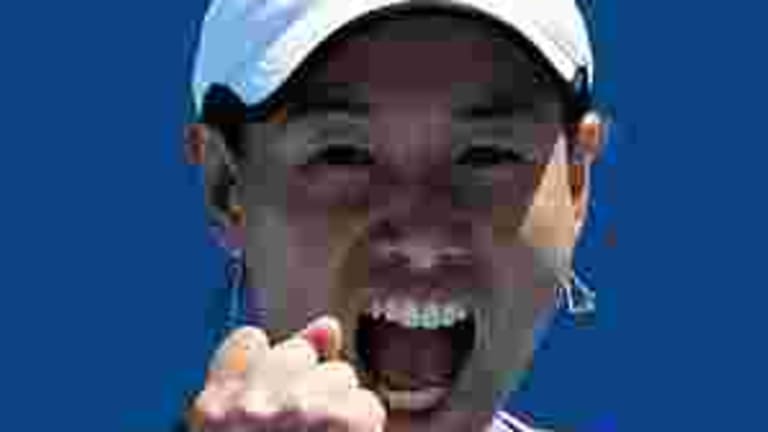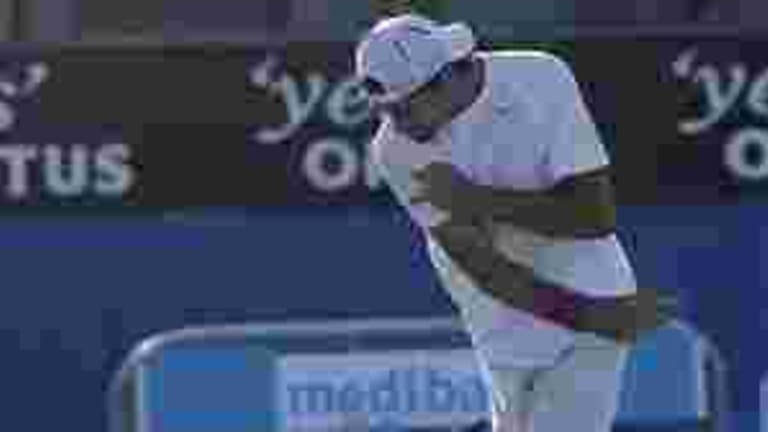I wrote an email to my colleagues yesterday afternoon to say I thought the second day of first-round play would produce a bonanza of upsets. After all, the menu was certainly tantalizing, from Caroline Wozniacki vs. Sabine Lisicki right on down to Roger Federer vs. the spectacularly talented and unpredictable head case, Benoit Paire.
As it turned out, it was a relatively quiet day on the men's side. The women, though, produced a flurry of upsets, starting with Carla Suarez Navarro’s elimination of No. 7 seed Sara Errani, the 2012 French Open finalist.
But the most striking upset was one that just had to make even a sourpuss break out a huge grin: Kimiko Date-Krumm simply demolished Nadia Petrova, seeded 12th and champion of Sofia’s Tournament of Also Rans in late 2012, by the bone-crunching score of 6-2, 6-0.
At age 42, Date-Krumm is now the oldest woman to win a singles match at the Australian Open since the dawn of Open tennis.
In fact, time-traveler Date-Krumm had not won a singles match at this tournament since 1996, a year when the youngest singles player in the main draw this year (Donna Vekic) wasn’t even born. Date-Krumm has learned to take such details and facts in stride with a smile and a wink. As she said in her presser after she felled Petrova, who’s not only 12 years younger, but more than six inches taller:
“Some people, the player's mother is younger than me—so it's like (I’m playing) my daughter,” she said. “Everybody is almost half age as me, so it’s not easy but I’ve got nothing to lose so I just try to keep going. . . I don’t have a target or a dream, so I’m just enjoying the travelling and talking to the young players. It is fun.”
So much for the schmaltzy “follow your dream!” industry, eh? I’ll have what Kimiko’s drinking, thank you very much.


